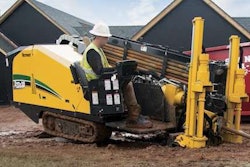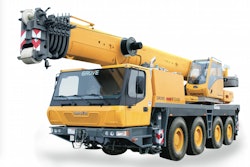
Phase 2 of the program would “significantly reduce carbon emissions and improve fuel efficiency of heavy-duty vehicles, helping to address the challenges of global climate change and energy security,” according to the EPA.
The proposed standards will begin in model year 2018 for trailers and 2021 for tractors and culminate in vehicle-wide — engine, truck and trailer—standards for model year 2027 vehicles.
The EPA said the proposed plan will cut GHG emission by approximately 1 billion metric tons and conserve about 1.8 billion barrels of oil over the lifetime of the vehicles sold during the program.
NHTSA Administrator Mark Rosekind said the more stringent standards would result in a $10,000 to $12,000 increase in the cost of a new truck. Buyers, however, of a trucks in long-haul operations in 2027 would recoup the extra cost of the technology within two years through fuel savings. Phase 2 would save U.S. vehicle owners collectively about $170 billion in fuel costs over the lifetime of the vehicles sold between 2021 and 2027, according to a report from the agencies.
The American Trucking Associations weighed in on the issue Friday, supporting the direction the standards are going.
“Fuel is an enormous expense for our industry – and carbon emissions carry an enormous cost for our planet,” said ATA President and CEO Bill Graves. “That’s why our industry supported the Obama Administration’s historic first round of greenhouse gas and fuel efficiency standards for medium and large trucks and why we support the aims of this second round of standards.”
The Owner-Operator Independent Drivers Association, however, questions the rule.
“Truckers already have every incentive to be efficient since fuel is the highest operating cost for an owner operator,” the group said in a statement. “We are reviewing the proposal to see if the input from small business truckers was truly taken to heart. Based on reviews of initial summaries, we do have concerns that the rule will push truckers to purchase technology that is not fully tested and may lead to costs such as increased maintenance and down time that will eclipse the potential savings estimated in the proposal.”
ATA, despite its soft approval, also voiced concern that certain technologies could be deployed on trucks before they could be fully tested.
“ATA has adopted a set of 15 ‘guiding principles’ for Phase 2,” said ATA Vice President and Energy and Environmental Counsel Glen Kedzie, “and based on conversations with regulators and a preliminary review this proposal appears to meet 14 of those. We believe this rule could result in the deployment of certain technologies that do not fully recognize the diversity of our industry and could prove to be unreliable. This unreliability could slow not only adoption of these technologies, but the environmental benefits they aim to create. To prevent this, truck and engine manufacturers will need adequate time to develop solutions to meet these new standards.”
For the first time, emissions regulations will also be put on trailers, set to begin in 2018. The EPA and NHTSA said they are proposing to regulate trailers because they significantly contribute fuel consumption and subsequent carbon pollution emissions.
The agencies said components like aerodynamic devices, low rolling resistance tires and automatic tire inflation systems could offer “significant carbon emissions and fuel use reductions for the vehicle.”
NHTSA’s trailer standards would be voluntary from 2018 to 2020, becoming mandatory in 2021. There is no requirement, however, to retire or retrofit older trailers. The standards will only apply to new trailers.
The types of trailers included in the proposed standards are:
- Long (longer than 50 feet) highway box trailers-dry vans
- Long highway box trailers -refrigerated vans
- Short (50 feet and shorter) highway box trailers-dry vans
- Short highway box trailers-refrigerated vans
- Non-box highway trailers
The EPA estimates that, in 2027 when the standards are fully phased in, heavy-duty vehicles across all classes would achieve the following carbon dioxide emissions and fuel use reductions:
- 24 percent for combination tractors designed to pull trailers and move freight when compared to Phase 1 standards
- 8 percent for trailers when compared to an average model year 2017 trailer
- 16 percent for vocational vehicles when compared to Phase 1 standards
- 16 percent for pick-up trucks and light vans when compared to Phase 1 standards
President Barack Obama requested the standards be finalized by March 2016. Once posted on the Federal Register, the standards will be open for comment for either 60 days. After the comment period, the agencies will work to finalize the standards, aiming for the requested March 2016 deadline.













